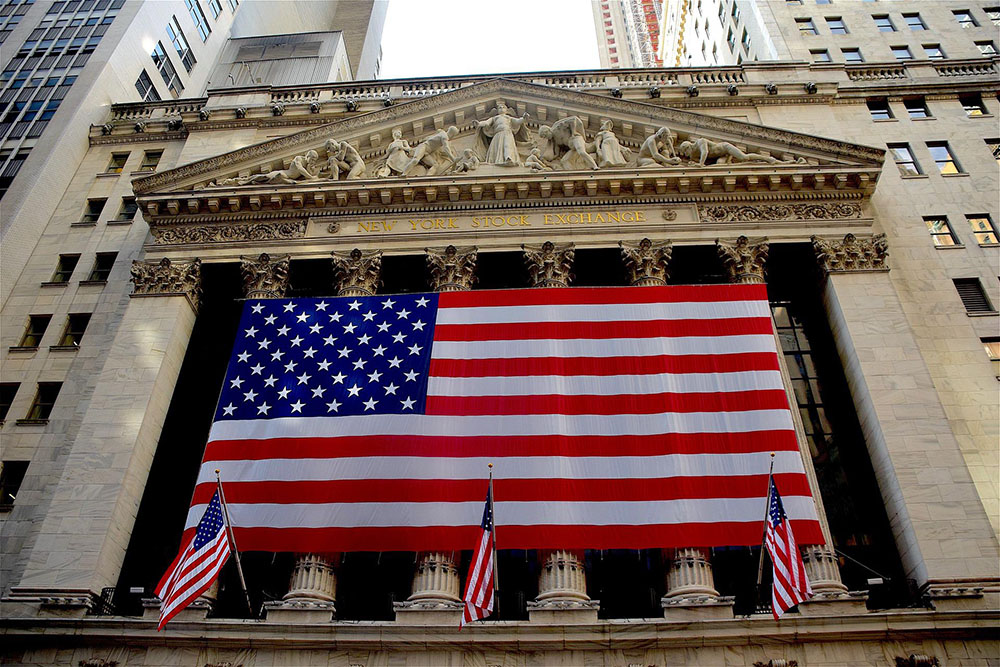New York — the preeminent financial district
“It was never built for the comfort and happiness of its citizens, but to astonish the world.” Susan Ertz
Amsterdam may have birthed the first stock market, but it is in New Amsterdam where finance has reached its greatest heights. In among the shadows of the skyscrapers, the wind blows through Wall Street and is felt around the world. It is also the playground of the rich, famous, and sports-mad locals, especially those ambitious “locals” it continues to draw from around the world every year. New York is the preeminent financial district. Not only is it ranked first on numerous lists of financial districts, but it dominates its competition across almost all measures. According to the Global Financial Centres Index, of the five competitive areas and eight industrial sectors it measures, New York ranks first in all but one (banking) where it ranks second to Shenzhen. Another illustrative example is stock market capitalisations: the combined capitalisation of the NYSE and NASDAQ was larger in August 2022 than the next 10 stock markets combined.

The combined capitalisation of the NYSE and NASDAQ was larger in August 2022 than the next 10 stock markets combined
It is also home to some of the world’s biggest banks and companies including JPMorgan Chase, Citigroup, IBM, PepsiCo, Morgan Stanley, and Goldman Sachs. And into these offices as executives or clients walk the highest number of millionaires in the world: 345,600. Only the San Francisco Bay Area with Silicon Valley has more billionaires.
The New York area was home to the Algonquian people long before the Dutch and English arrived. In 1624, when the Dutch settled Manhattan Island, Beijing and Constantinople were the largest cities in the world.
Due to its location, rich agricultural land, deep-water port, and Dutch heritage, New York quickly became a key port for exporting flour and food to the Caribbean. In return it received raw sugar and slaves.
In the immediate decades after the founding of the United States, Philadelphia was the leading financial district in the new country. New York was third behind Boston. It was the Bank of Pennsylvania that largely funded the US War of Independence. Philadelphia also had the first Federally charted bank (and de-facto central bank) and the Philadelphia Stock Exchange opened 25 years before the NYSE.
However, New York slowly overtook both Philadelphia and Boston. As trans-Atlantic ships became bigger with improvements in technology, New York won out over the other two cities because of its deeper port and because it did not freeze over in winter. It was also favoured by the British. Once New York became the main trade hub for US cotton, tobacco, and illegal slaves, it developed the economies of scale and specialisations to maintain its lead. This included the development of its insurance companies, auction houses, and other financial services. When the Erie Canal was completed in 1825, opening trade to and from the Great Lakes and the frontier, New York’s domestic ascendancy was complete. A growing manufacturing sector also contributed to its growing financial influence. Manufacturing continued to be a boon to finance in the city in the late 1800s and early 1900s.
Starting in the 1850s, immigration greatly increased. By the 1920s New York was the largest city in the world. Immigration created a large consumer market and labour force in the city, and this combined with its importance as a port led to the further growth of its manufacturing industry. The clothing industry became the city’s dominant industry from the mid-1800s. Printing and publishing was second.
With the economic and geo-political rise of the US, it was inevitable that New York would eventually become the world’s financial capital. But it took The First World War for it to finally eclipse London. During the war, the allies turned to the US for food, ammunition, and money. As a result, the US switched from being a net borrower to a net lender to the world and New York was at the forefront. So when the NYSE crashed in 1929, the crisis spread from New York to the world.
New York has maintained its financial importance to this day helped by the economic dominance of the US after the Second World War and by the US dollar’s position as a global reserve economy. It has also benefitted from the US’s lead in the digital revolution. The United Nations is also headquartered in New York.
While the hollowing out of its manufacturing saw the city experience urban decay in the 1970s and 1980s, as represented in movies like Taxi Driver and Escape from New York, New York was spared compared to cities like Detroit and Philadelphia. Its financial district and the growth in financial services and products starting in the 1980s provided increased employment and economic growth for the city.
The city boomed in the 1990s as the US economy and Wall Street boomed. Immigration increased, crime subsided, and gentrification took hold. The city became a desirable destination for the rich and famous. The September 11 terrorist attacks in 2001 rocked the city but did not break it.
Today, New York is not only seen as the world’s financial capital but also one of its cultural and sporting capitals. Along with the Metropolitan Museum of Art, there is MoMA, Carnegie Hall, and Madison Square Garden.
It also has 76 Michelin-starred restaurants in 2022, lagging only Tokyo, Paris, Kyoto, and Osaka. COVID-19 hit the restaurant industry hard but there are signs of recovery.
New York also has ten major sporting teams, two in each of the four US major sports and two MLS teams. The New York Yankees and Knicks are synonymous with New York. Sports radio can be heard through building sites and taxi cabs throughout the city.
The city is also ranked high on many lists as a top shopping destination. From Fifth Avenue to Macy’s and independent boutiques, there is a wide range in styles.
It is thus no surprise that it is one of the world’s most desirable cities. Timeout magazine ranks it as the number one city people want to move to and visit. This is despite its lowly ranking of 44th in Mercer’s list of most liveable cities.
Critics of New York point to a rundown subway system, astronomical real estate prices (excepting rent-controlled apartments), a high cost of living (seventh on Mercer’s cost of living), hot summers and cold winters, and even a lack of internal laundries. Living in New York can be challenging especially for those on lower incomes. For many COVID-19 was the final straw with a 3.5 percent decrease in the population in the 12-months ending on 1 July 2021.
The rich of course avoid many of these problems with private transport, newer apartments, and weekend houses in the Hamptons. Lifestyle New York is good for the rich and famous.
However, New York with the Statue of Liberty still epitomises the American dream both for Americans and foreigners. The call of New York remains strong. The dominance of the financial district is also not expected to dissipate anytime soon. New York has already invested heavily in fintech and blockchain.
Maybe China will one day overtake the US economy in size and Shanghai and Shenzhen will overtake New York in importance. Will the US dollar go the way of the Byzantine solidus? No empire lasts forever. Even so, whatever happens, New York’s afterglow will surely last for centuries.
You may have an interest in also reading…
Measuring Wealth to Track Sustainability
The new edition of the World Bank’s Little Green Data Book, released on World Environment Day 2014, includes a new
IFC: Addressing Climate Change Can Unlock $23 Trillion-Dollar Investment Opportunities in Emerging Markets
By Christian Grossmann and Thomas Kerr The historic Paris climate change agreement entered into force in record speed last November,
Inez Murray: Women in Business – Bankers Advised to Take Note
Getting banks to notice women is quite the challenge. Whereas research consistently shows that women are exceedingly good at managing


















































































